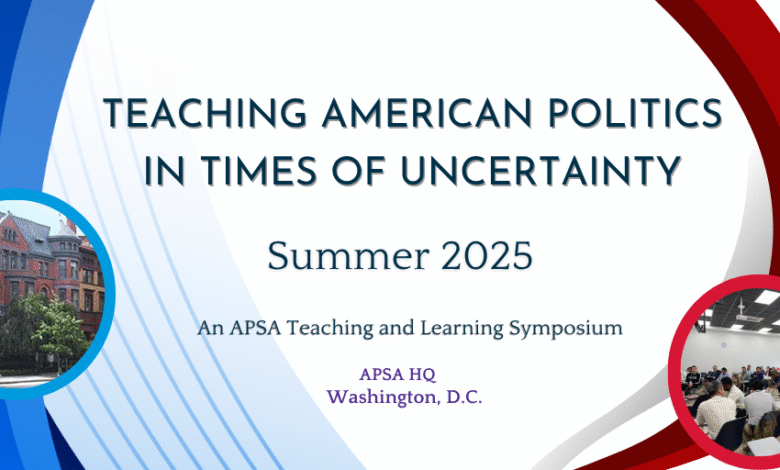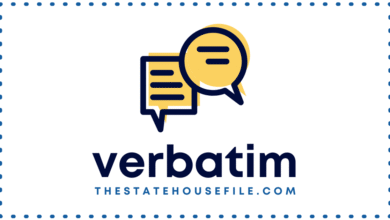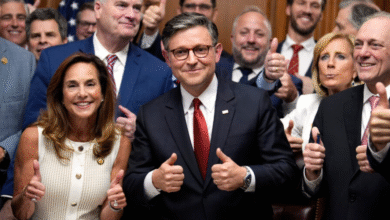Teaching American Politics in Times of Uncertainty: A Resource Collection –

By Michelle D. Deardorff, University of Tennessee at Chattanooga and Allison Rank, University of Northern Iowa
In late July, twelve political science educators gathered online to reflect on the challenge of teaching introductory American government courses at a time when trust in institutions is eroding, students’ habits around reading and participation are shifting, and faculty face new state mandates on required texts and assessments. What emerged was a candid exchange about how much the traditional survey course must change to remain relevant in this political moment.
Participants shared how they are rethinking what to keep, what to cut, and what new approaches best prepare students to understand and engage in democracy.
Participants shared how they are rethinking what to keep, what to cut, and what new approaches best prepare students to understand and engage in democracy. Some described assignments that use primary documents and concept mapping to strengthen analytical and writing skills, while others designed courses around motivating questions such as Is America the best democracy? or What happens when trust erodes? Several emphasized the importance of helping students see themselves not as spectators, but as active participants in the political system using tools like self-diagnostics and comparative activities to connect personal experiences to concepts such as ideology and political socialization.
Faculty contributions clustered around three strategies:
- Building Skills: Introductory courses provide an opportunity to build skills important for student success and citizenship. Instructors intentionally craft assignments to develop students’ analytical skills through connecting political documents to analytical skill building with writing assignments and concept maps.
- Focusing on the Big Questions: A number of instructors orient individual sections of their course—or even the entire course—around an open-ended question or questions. Good questions provide opportunities for students to articulate a viewpoint, consider methods and data appropriate to the discipline, and engage relevant debates, without them feeling coerced to the “right” answer.
- Student-as-Subject: To support students’ perceiving themselves as players in—rather than spectators to America’s political system, many instructors leverage a range of diagnostics and activities that help students identify their own political histories or perspectives. This personal knowledge then connects to traditional concepts such as ideology and political socialization and better engages students as participants in our governance.
Across these discussions, two themes stood out: the importance of situating the study of American politics within a broader global context, and the value of accessible resources that allow faculty to experiment with new assignments and designs. The collection now available on APSA Educate brings these ideas together, offering assignments, dialogues, and data tools alongside an annotated bibliography that links each resource to APSA’s updated Learning Outcomes.
While there is consensus that every introductory course must cover certain foundational content, the symposium made clear that simply relying on the standard canon is no longer enough. Teaching American politics today requires an intentional rethinking of purpose, structure, and strategy, an approach this new resource collection is designed to support.
Credit: Source link






